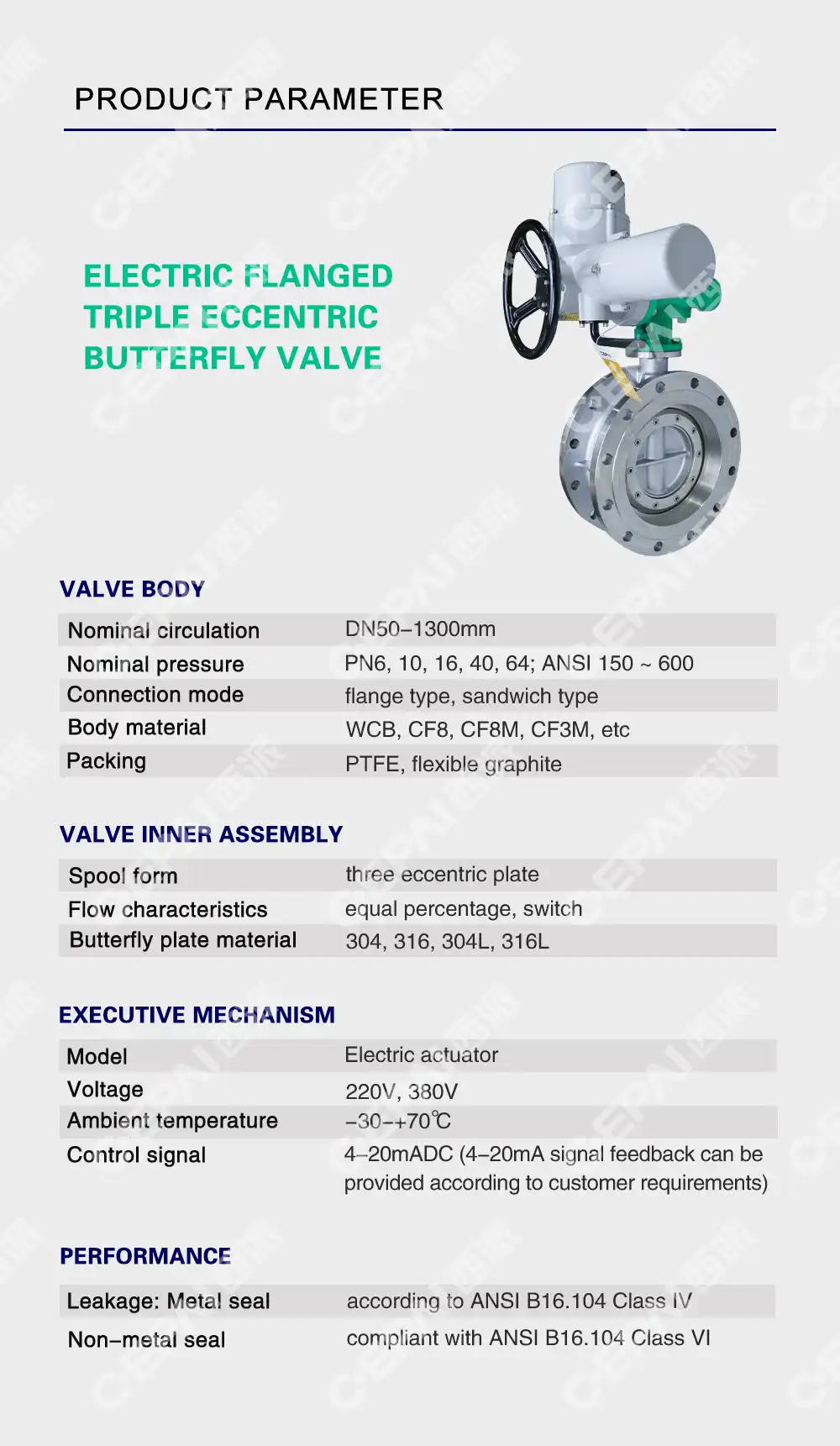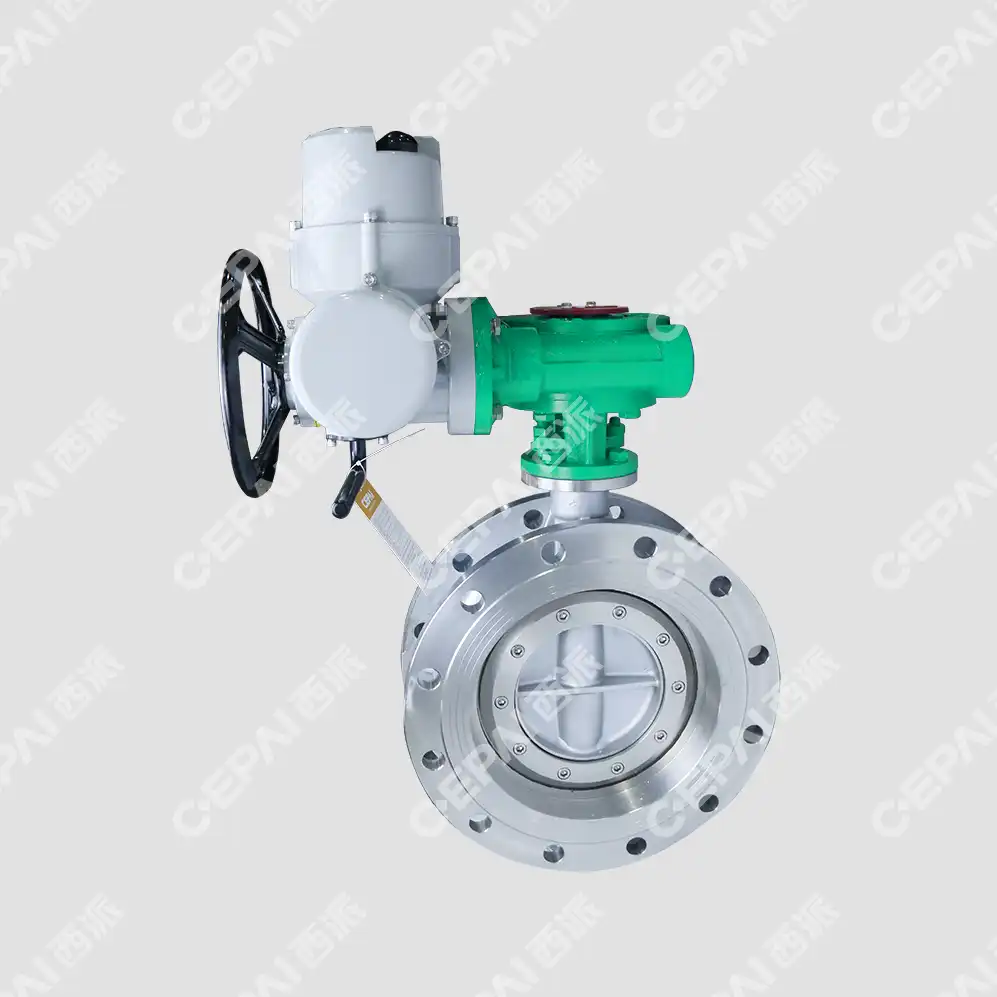Design and Operational Principles of Triple Offset Butterfly Valves
Innovative Triple Offset Configuration
An engineering marvel, the triple offset butterfly valve improves performance by design by combining three separate offsets. The first offset positions the stem slightly off-center from the pipe's centerline, while the second offset places the stem behind the seat's face. The seat and seal geometry form a cone at the third and most important offset. By simulating a cam movement when operating, this unique design prolongs the life of the sealing components and guarantees a tight seal even after numerous cycles.
Material Selection for Optimal Performance
Selecting the appropriate materials for triple offset butterfly valves is crucial for their longevity and effectiveness. The body and disc are typically constructed from durable metals such as stainless steel, carbon steel, or specialized alloys, depending on the specific application requirements. In cases of extremely high or low temperatures, the sealing components may make use of modern materials such as metal-to-metal seals or PTFE (polytetrafluoroethylene). Because of the materials' resistance to erosion, corrosion, and thermal stress, the valve can endure harsh conditions for a long time.
Actuation and Control Mechanisms
Triple offset butterfly valves can be equipped with various actuation systems to suit different operational needs. Manual operators, such as handwheels or levers, are common for smaller valves or in applications where frequent adjustments are not required. Actuators powered by electricity, hydraulics, or pneumatics can automate and precisely regulate increasingly demanding situations. Digital positioners and smart valve controllers are examples of cutting-edge control technologies that can be connected with these actuation systems to allow for remote operation and real-time monitoring of valve performance. Predictive maintenance solutions are made possible and process efficiency is enhanced by this degree of control.
Applications and Industries Utilizing Triple Offset Butterfly Valves
Oil and Gas Sector Implementation
The oil and gas industry heavily relies on triple offset butterfly valves for their robustness and versatility. The wellhead systems and production manifolds in upstream operations use these valves, which are designed to endure high pressures and corrosive fluids. Particularly in situations where standard globe valves would not function, like extremely large-diameter pipelines, their ability to isolate and regulate flow makes them perfect for usage in pipeline systems. In refineries and petrochemical plants, process control is a crucial function of the triple offset butterfly valve. These valves can work with many different kinds of hydrocarbons and in both high and low temperatures.
Power Generation and Energy Applications
Power plants, both conventional and renewable, benefit from the high-performance characteristics of triple offset butterfly valves. Designed to reliably shut off steam even in the most extreme steam circumstances, these valves are used for main steam isolation in steam turbine systems. In feedwater systems and condenser applications, they are utilised where a watertight seal is crucial to the performance of the system. The capacity of triple offset butterfly valves to withstand cryogenic temperatures with zero leakage performance makes them a vital component in the rapidly expanding sector of liquefied natural gas (LNG) processing.

Water and Wastewater Treatment Facilities
The water industry leverages triple offset butterfly valves for their excellent sealing properties and resistance to abrasive media. These valves are commonly found at crucial intersections in large-scale water distribution networks, where the management and isolation of flows are of the utmost importance. Because of their versatility and resistance to fouling, these valves find widespread use in wastewater treatment plants. One area where they excel is in sludge handling systems, where they are used at various phases of the treatment process. These valves are perfect for long-term installations in municipal water infrastructure projects due to their reduced maintenance requirements and low-torque functioning.
Maintenance and Best Practices for Triple Offset Butterfly Valves
Routine Inspection and Preventive Maintenance
Maintaining triple offset butterfly valves is crucial for ensuring their longevity and optimal performance. The parts of the valve should be checked for signs of wear, rust, or damage on a regular basis. This means checking the disc, seat, and stem for any problems. Following the manufacturer's instructions for lubricating moving parts, especially the stem and joints, is important. Also, check the sealing elements of the valve to make sure they are still in good shape. These are necessary to keep the zero-leakage performance. Adding these inspections to a regular maintenance plan can greatly lower the chance of unexpected failures and increase the valve's useful life.
Troubleshooting Common Issues
Despite their robust design, triple offset butterfly valves may occasionally encounter operational issues. Leaks, trouble with operation, or an incomplete closing are all common problems. You can fix leaks by changing the valve's seating parts or replacing seals that are worn out. If the valve is hard to open and close, it could mean that the actuator, stem, or joints need to be cleaned, oiled, or replaced. If the valve doesn't close all the way, it could be because of debris in the valve or the disc being out of alignment. This would require a thorough cleaning or realignment process. It's important to look at the manufacturer's instructions and, if necessary, get help from a professional to avoid making the problem worse.

Proper Installation and Commissioning
The performance and longevity of triple offset butterfly valves heavily depend on proper installation and commissioning. During installation, careful attention must be paid to alignment within the piping system to prevent undue stress on the valve body. The use of appropriate gaskets and fasteners is crucial for maintaining a leak-free connection. Before commissioning, it's important to conduct a thorough flush of the piping system to remove any debris that could damage the valve or impair its operation. Initial operation should include a full stroke test to ensure smooth movement and proper seating of the disc. Proper training of operators on the valve's characteristics and control systems is also essential for optimal long-term performance.
Conclusion
A significant upgrade from our previous setup is these triple offset butterfly valves. They work better when things are tough in the industry. Because of the way they're shaped, they close well, last a long time, and work well in many situations. In processes like treating water and processing oil and gas, these valves are very important for making sure that the flow is controlled correctly and that the process is safe. Modern industrial processes will increasingly rely on triple offset butterfly valves due to the ever-increasing performance and reliability criteria. Consequently, there will be further changes to their design and use.
Contact Us
For cutting-edge triple offset butterfly valves and expert guidance on valve solutions, trust CEPAI Group. Our advanced manufacturing processes and commitment to quality ensure you receive products that exceed industry standards. Experience the benefits of our innovative valve technology and unparalleled customer support. Contact us today at cepai@cepai.com to explore how our solutions can optimize your operations and improve your bottom line.


_1746598525968.webp)



